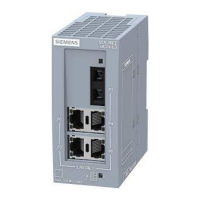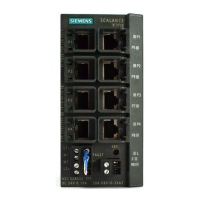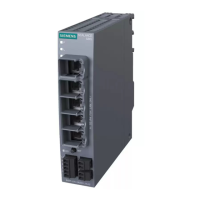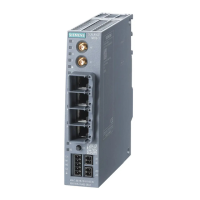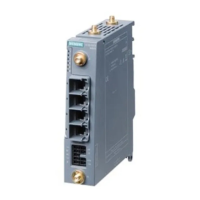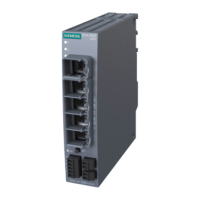Configuration, displays and display elements
7.5 LED display
SCALANCE X-300
Operating Instructions, 02/2012, A5E01113043-12
151
The P1, P2, ... LEDs for the port status
The P1, P2, ... LEDs show information on the status of their respective ports (transmission
rate, mode, port monitoring). The meaning of these LEDs depends on the display mode
("DM" LED).
Meaning in display mode A
LED color LED status Meaning
- off No valid link to the port (for example station turned off or cable
not connected).
on Link exists and port in normal status. In this status, the port can
receive and send data.
flashes once per
period
Link exists and port in "blocking" status. In this status, the port
only receives management data (no user data).
flashes three times per
period
Link exists and port turned off by management. In this status,
no data is sent or received over the port.
green
flashes four times per
period
Port exists and is in the "monitor port" status. In this status, the
data traffic of another port is mirrored to this port.
yellow flashes / lit Receiving data at port.
With SCALANCE X-300 devices, both the receipt and the
sending of data is indicated for the optical gigabit ports.
Meaning in display mode B
LED color LED status Meaning
- off Port operating at 10 Mbps.
green on Port operating at 100 Mbps.
orange on Port operating at 1000 Mbps.
If there is a link fault and the type of transmission is fixed (autonegotiation off), the desired
status, in other words the set transmission rate (1000 Mbps, 100 Mbps, 10 Mbps) continues
to be displayed. If there is a link fault and autonegotiation is active, the port LED goes off.
Meaning in display mode C
LED color LED status Meaning
- off Port operating in half duplex.
green on Port operating in full duplex.
Meaning in display mode D
LED color LED status Meaning
- off The port is not monitored; in other words, if a link is not established at
the port, this does not trigger the signaling contact.
green on The port is monitored, in other words, if no connection was established
at the port (for example no cable inserted), this triggers the signaling
contact and an error state results.
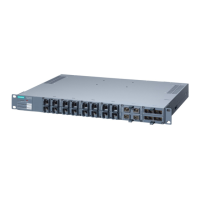
